People Analytics: How to Know and Manage Your People Better
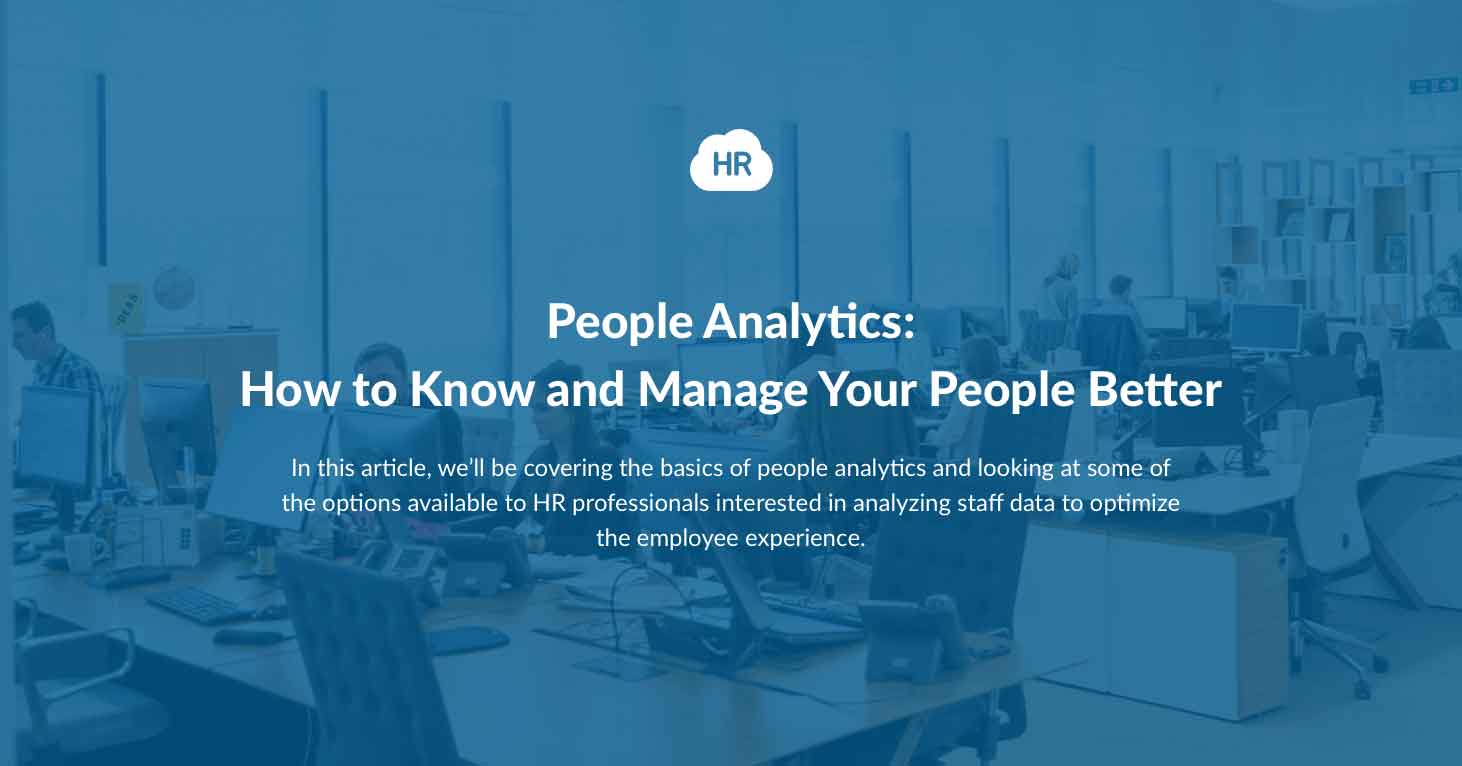


 Cut onboarding time
by 60%—here's the
Ultimate Checklist
that helped do it.
Cut onboarding time
by 60%—here's the
Ultimate Checklist
that helped do it.

The ultimate guide to knowing how your colleagues tick, and more importantly, why. Across multiple fields and industries, we live in an age in which data analytics is helping to streamline business processes and boost efficiency. In the world of HR, a data-driven approach is being used to enhance productivity, decrease staff churn, and create happier, healthier employees. The process of using data analytics in HR is known as people analytics, often visualized through people analytics dashboards and HR data visualization tools.
In this article, we'll be covering the basics of people analytics and looking at some of the options available to HR professionals interested in analyzing staff data to optimize the employee experience.
What is People Analytics?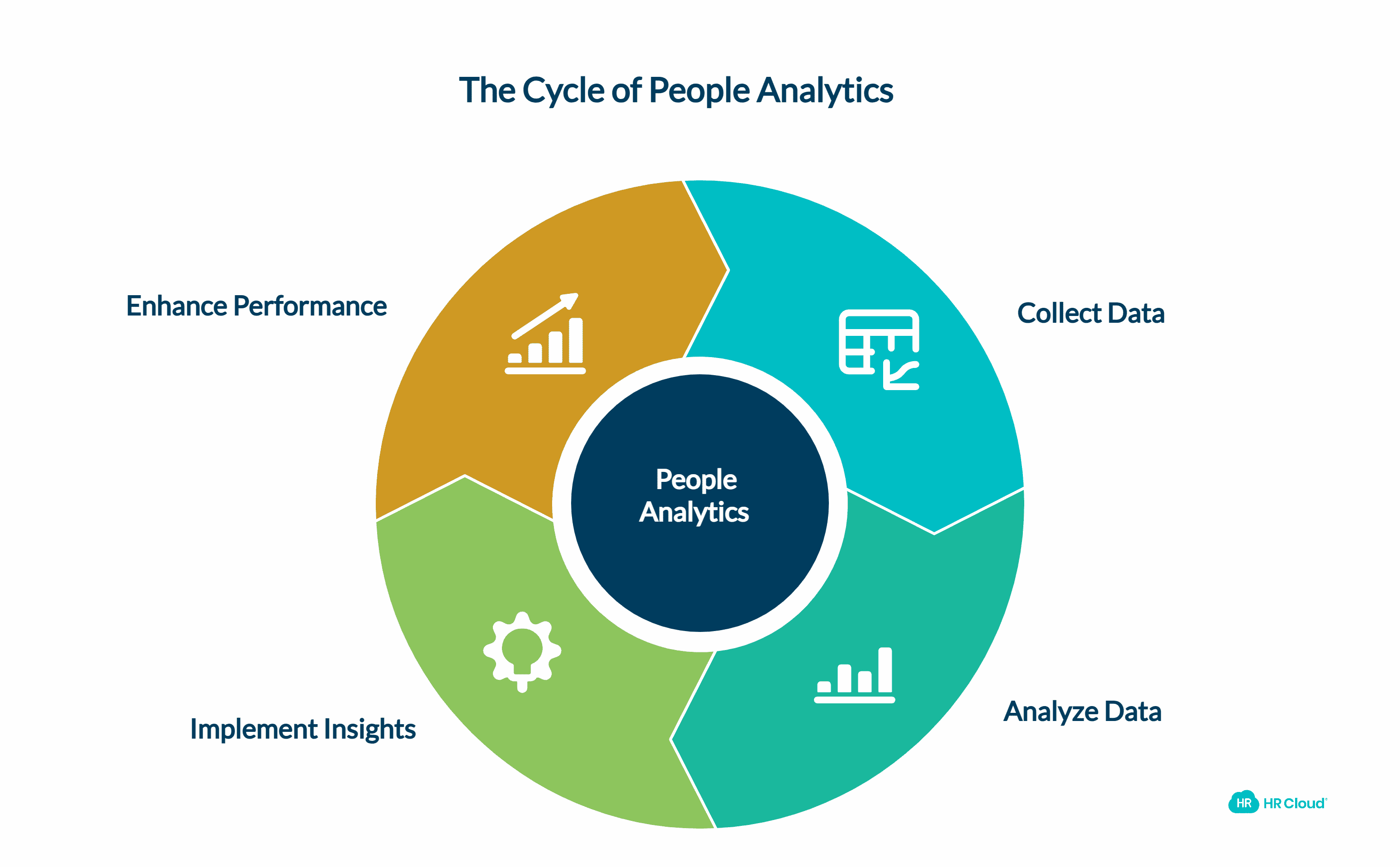
People analytics refers to the technology and process of collecting data on worker activity for the purpose of analysis. Also known as workforce analytics when done in a business context, companies do this in order to improve employee productivity and maintain a happy workforce.
Sources of employee data that can be used for analytics include employee performance metrics and staff feedback.
Many HR professionals also integrate their basic performance data, such as sales numbers or customer engagement metrics, with other analytics processes. For example, contact centers use real-time speech analytics that automatically transcribe conversations. This information can then be used for evaluation and training to enhance agents' performance and contribute to overall performance management strategies.
6 Advantages of People Analytics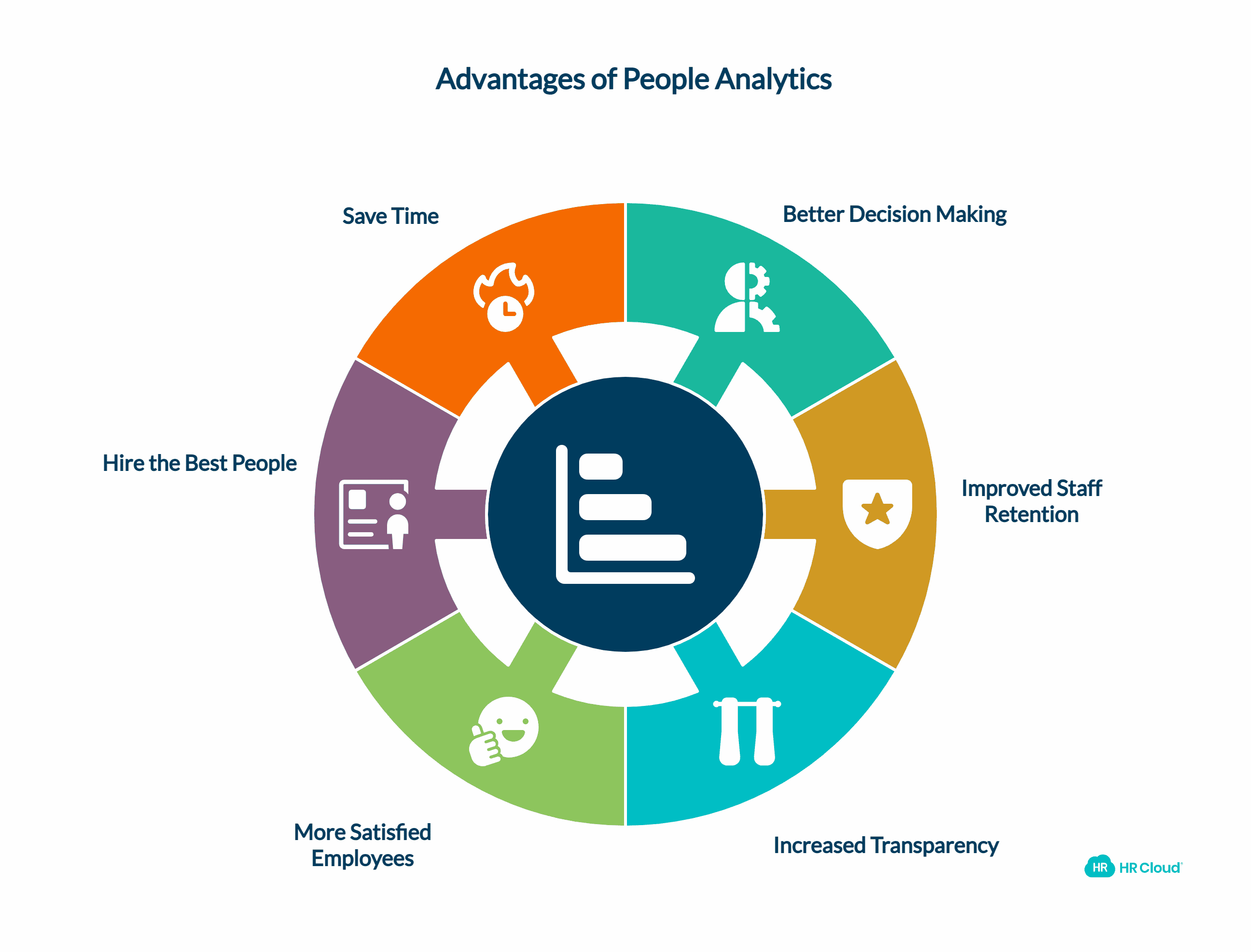
1. Better Decision Making
While in the past, HR professionals relied on intuition and subjective experience when it came to making decisions, these days, talent analytics software and better employee data are helping to drive more objective, data-based decision-making.
Thanks to people analytics, HR departments are able to generate genuine insights from both employee performance metrics and employee feedback in order to make decisions that are statistically more likely to lead to success. These tools can help you answer questions like which worker is best suited to a given task, who would most benefit from professional development courses, and when to redirect resources to best optimize workflows.
2. Improve Staff Retention
One of the most important tasks for HR teams in any business is decreasing employee turnover rates. Ultimately, it's better to implement effective retention strategies than to spend lots of time and money recruiting and training new employees.
Thanks to a technique known as predictive analytics, people analytics software is able to flag employees that show signs of having a high level of flight risk. As an HR professional, being able to identify staff members that are at risk of leaving is the first step to being able to proactively encourage them to stay.
3. Increase Transparency
Another central task for HR departments that is improved by people analytics is the process of communicating the hows and whys of business decisions to employees. Embracing people analytics improves transparency because of the simple and intuitive data visualization capabilities of modern analytics software.
Clear and effective communication is important because if people can see and interpret data for themselves, they're able to better understand what is required of them in the context of strategic business objectives and workforce planning. This leads to increased accountability and better relationships with managers and administrators.
Transparency is especially key to successful remote workforce management, where different means and levels of communication can sometimes lead to misunderstandings.
4. More Satisfied Employees
Workforce engagement is essential for running a successful business. Happier employees are more productive, more efficient, and more loyal. At the end of the day, employee satisfaction is what HR is all about.
Using people analytics can help you identify the effect of certain policies and decisions on employee engagement scores. It can help you to gauge the effect of executive decisions and to spot areas where staff are becoming disengaged or demoralized. With this knowledge, you can make the necessary changes to remedy the situation and focus on career development opportunities.
5. Hire the Best People
As well as helping you to retain the best workers, people analytics can be used to help ensure you hire the best people in the first place.
With the right talent acquisition and recruitment analytics, it's possible to create a predictive model from the data generated by your top performers. Applying this model during the assessment of potential hires then allows you to leverage the data from your best employees in order to predict who's statistically most likely to achieve similar results.
 Ready to pass your next audit—without the stress? See how you can simplify compliance and eliminate gaps before they become problems.
Ready to pass your next audit—without the stress? See how you can simplify compliance and eliminate gaps before they become problems.
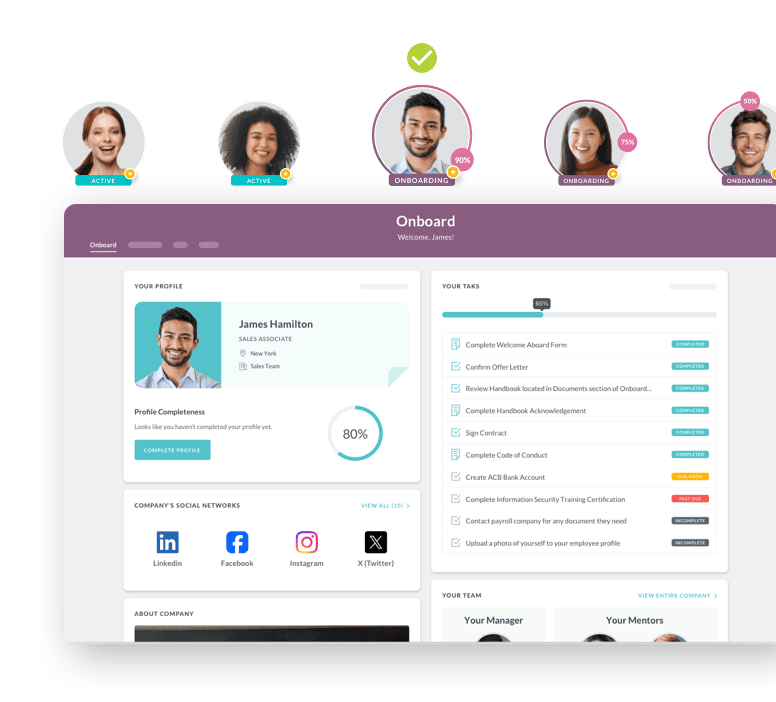
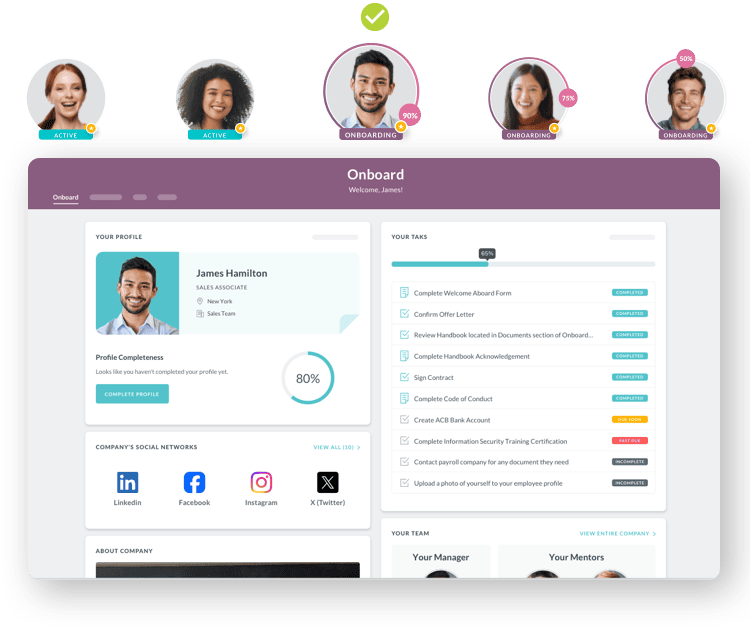
6. Save Time
As anyone who works in HR or recruitment knows, finding, hiring, and training the best talent can take a lot of time.
People analytics can save you a significant amount of time by showing you better ways of prioritizing your tasks and ensuring that you're spending time on the things that actually make a difference, such as improving recruitment efficiency and time-to-hire metrics.
How to Get Started 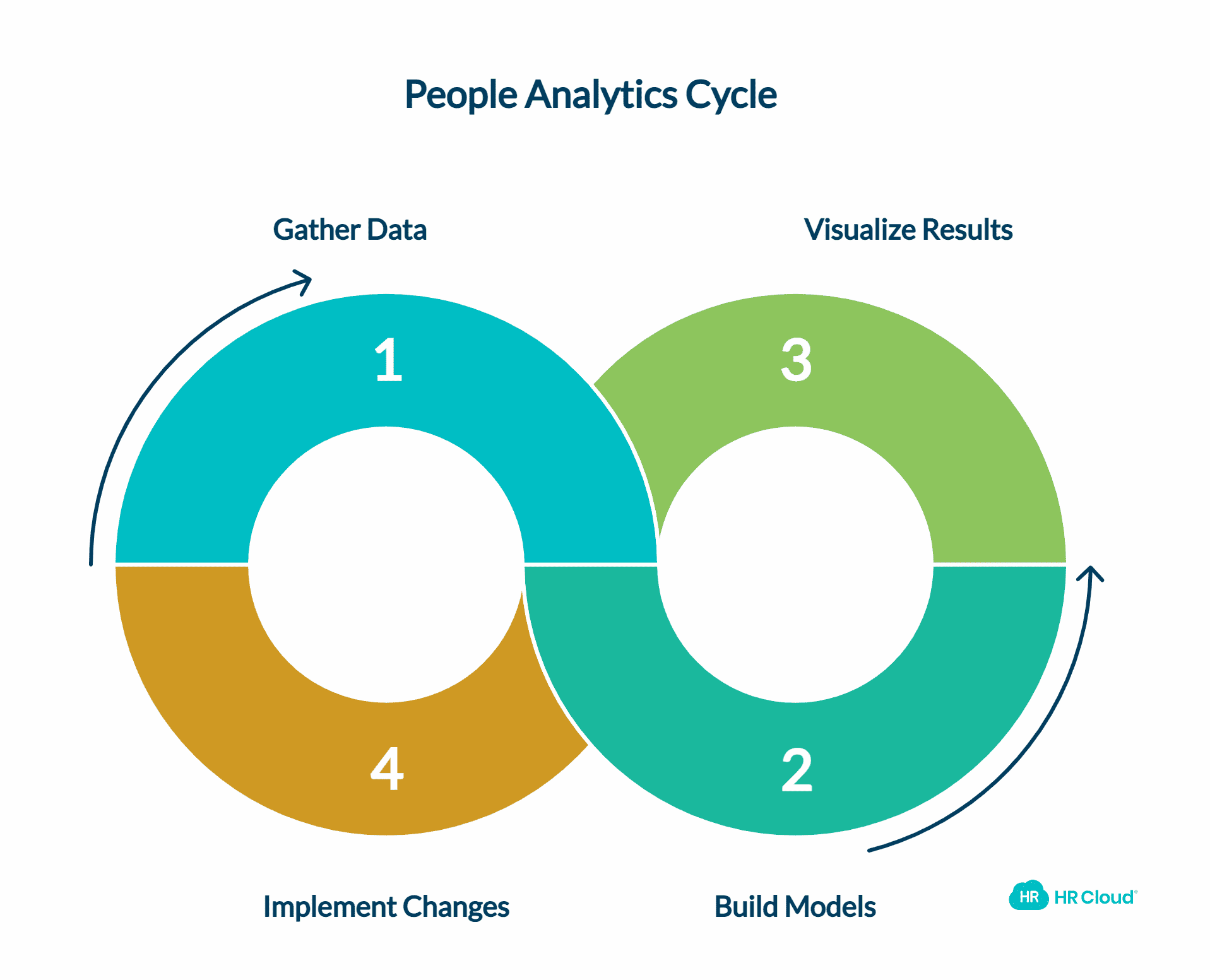
Getting an effective people analytics program going needn't be complicated. There are plenty of tools out there that put powerful analytics capacity at your fingertips. But before we get on to the software options available, we first need to understand the stages involved.
1. Gather Data
The first stage in any people analytics venture will always be to gather the necessary data. If you don't have an effective data pipeline, you will have nothing to run through whichever software you wish to use to gain insights.
If it's performance data you're after, it's likely that whichever digital tools your workers use already gather this data, or can be programmed to do so. Check what format your data needs to be in before you input it into any software, and make sure all your data capture processes are compliant with the relevant privacy laws and your employees' contracts.
Another valuable source of data in the field of HR is employee surveys. Some analytics platforms have this function built in, but it's also possible to set up your own surveys.
There are plenty of processes that you likely already implement that generate useful data too. For example, with people analytics, accident and injury reports can be leveraged to help create a more safe workplace and analyze absenteeism patterns.
2. Build and Apply Models
Once you have amassed the required data, it's just a matter of using the right software to generate insights by building both predictive and prescriptive models.
Modern analytics techniques mobilize machine learning, artificial intelligence, and various other data science methodologies to create models. A predictive model is one that uses your data to tell you the most statistically likely result given certain known variables.
A prescriptive model is one that helps with decision-making. It tells you which course of action out of multiple options is probabilistically the most advantageous according to the desired outcomes.
3. Visualize and Interpret Results
One of the biggest advantages of today's analytics tools is their ability to create meaningful visualizations out of otherwise dense and indecipherable datasets. A good visualization is key to interpreting the results of your analytics in a way that optimizes the labor of your workforce.
Getting creative with your data visualization can lead to unexpected insights that the data alone would never reveal if it was left in purely numerical form. Interactive dashboards can help in presenting real-time insights and workforce trends effectively.
4. Implement Changes
Alongside customer experience analytics, people analytics can be one of the biggest ways that Big Data can help to improve your business's performance. But only if you act upon the insights gained.
While prescriptive models will give you tell you directly what the optimal approach to a given challenge is, acting upon the results of predictive models will require you to make further calculations based upon the predictions. Combining predictive and prescriptive analytics is the most advanced way to create insight from your data and then act upon it, especially in areas like succession planning and span of control optimization.
What is an HR dashboard?
An HR dashboard is one of the most important tools for organizations looking to leverage the power of people analytics. A people analytics dashboard compiles all the known information about your workers in a single place and allows you to run sophisticated data processes from an intuitive dashboard. These interactive dashboards provide real-time insights into various HR metrics and headcount metrics, enabling better business intelligence and decision-making.
There are many HR dashboards on the market. Some of the most popular include:
-
HR Cloud
-
Workday
-
Anaplan
-
Bamboo HR
-
OfficeVibe
-
Orgvue
-
Visier People
-
HiBob
When deciding which platform is most suitable for your business needs, you should consider which key performance indicators (KPIs) you'll be monitoring, what kind of data you have available, and what data analysis features you require. Look for platforms that offer comprehensive HR technology integration to ensure seamless data flow and analysis.
People Analytics and Remote Work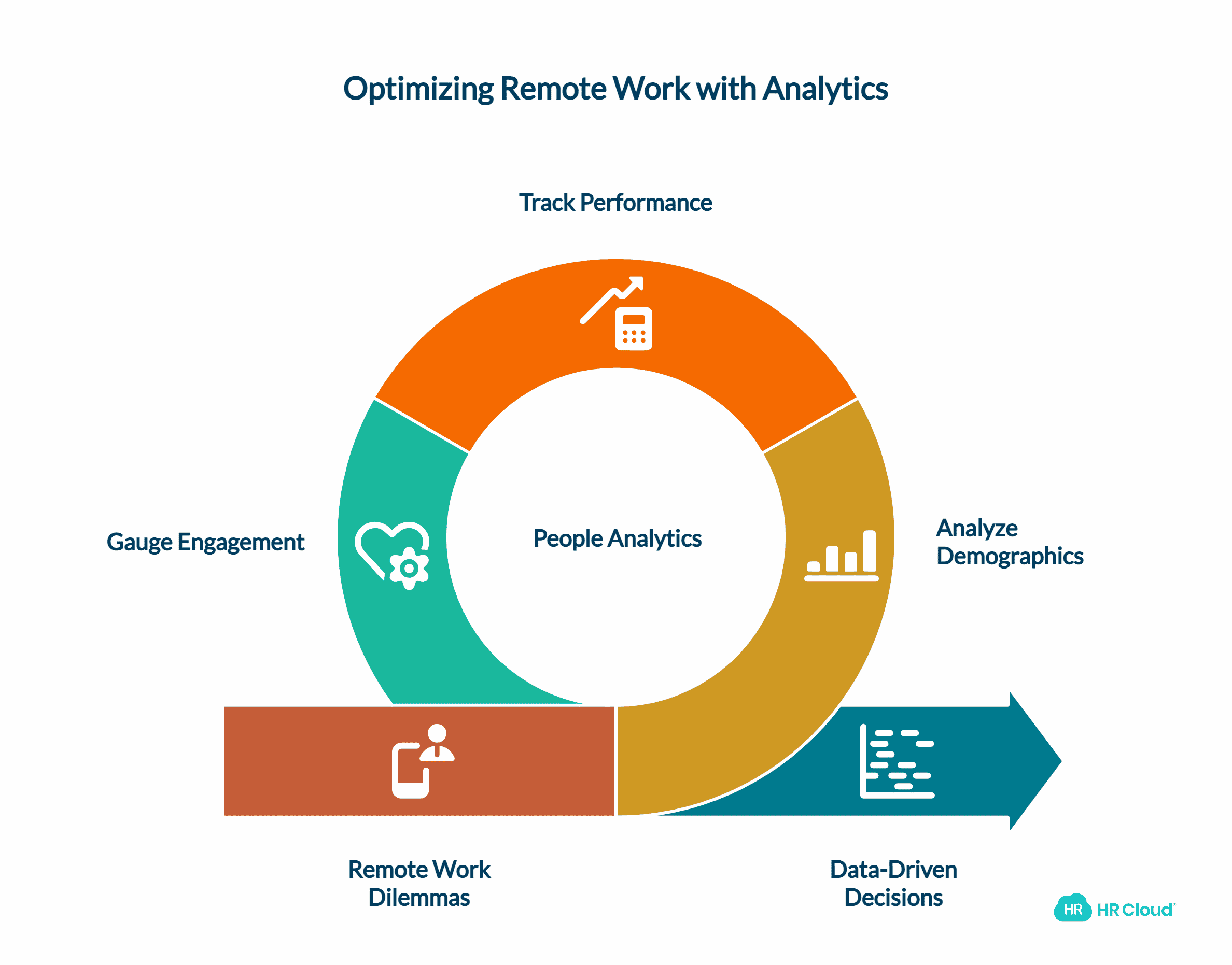
Whether you work in a hundred-year-old business with thousands of employees or for a start-up with a small, intimate team of staff, remote working is a reality for many businesses. It's also an employment model that is only likely to grow, with many Generation Z employees saying that they prefer remote or hybrid working over rigidly location-based office jobs.
While there are plenty of businesses, such as virtual law firms, that now operate entirely without an in-location workforce, the hybrid approach has also proven popular, but it comes with its own dilemmas. Businesses that offer a combination of in-office and home working are asking what the correct balance is. When to ask employees to come into a physical location? And whether home working requires or benefits from more flexible work hours? People analytics can help answer these questions by analyzing workforce demographics, employee performance metrics, and engagement scores in different work environments.
Conclusion
Now you know what people analytics is, and how it could help your organization, all that's left to do is take the leap.
Many of the tools and platforms discussed in this blog offer free trials so that you can try out a product or service before you commit to any purchase or subscription. With that in mind, what's stopping you from leveraging people analytics for better talent management, employee development, and overall organizational success?
 Discover how our HR solutions streamline onboarding, boost employee engagement, and simplify HR management
Discover how our HR solutions streamline onboarding, boost employee engagement, and simplify HR management
FAQ's
1. What is people analytics, and why is it important for HR?
People analytics, also called workforce analytics, is the process of collecting, analyzing, and interpreting employee data to improve decision-making, productivity, and engagement. By using insights from performance metrics, employee feedback, and operational data, HR teams can make data-driven decisions to reduce staff turnover, enhance employee satisfaction, and optimize business processes.
2. What are the key benefits of implementing people analytics?
People analytics helps HR teams:
-
Make better, data-driven decisions
-
Improve staff retention through predictive modeling
-
Increase transparency across the organization
-
Enhance employee satisfaction and engagement
-
Hire the right talent using performance-based models
-
Save time on HR processes like recruiting, training, and performance evaluations
3. How do you start a people analytics program?
Starting a people analytics program involves:
Gathering data – Collect performance metrics, surveys, HRIS data, and operational records.
Building models – Use predictive and prescriptive analytics to forecast trends and guide decisions.
Visualizing results – Create dashboards and charts to simplify complex data for interpretation.
Implementing changes – Act on insights to improve workforce strategies and policies.
4. What tools and platforms are commonly used for people analytics?
Some of the most widely used HR analytics and dashboard platforms include:
-
HR Cloud
-
Workday
-
Bamboo HR
-
Visier People
-
HiBob
-
OfficeVibe
-
Orgvue
When choosing a platform, consider the KPIs you want to track, the type of employee data you collect, and the analytics capabilities you need.
5. How does people analytics support remote and hybrid work?
People analytics enables HR teams to monitor engagement, productivity, and collaboration across remote or hybrid teams. By analyzing data on task completion, communication patterns, and employee feedback, organizations can optimize work schedules, balance office and home time, and ensure that remote employees remain connected, motivated, and productive.
Author Bio:
Grace Lau is the Director of Growth Content at Dialpad, an AI-powered cloud communication platform enhancing the digital employee experience for better and easier team collaboration. She has over 10 years of experience in content writing and strategy. Currently, she is responsible for leading branded and editorial content strategies, partnering with SEO and Ops teams to build and nurture content. Here is her LinkedIn.
Keep Reading
The Hidden Metrics of Frontline Success: Beyond Engagement Scores
"What gets measured gets managed, but what gets measured well gets transformed." — Peter
Embracing Diversity: Recognizing Different Cultures in the Workplace
Workplaces today reflect the incredible diversity of the world around us. People bring
From Manual to Automated: A Complete Guide to Digitizing Employee Onboarding for Large Organizations
Sarah Chen, Director of HR at a 7,000-employee healthcare organization, starts her Monday
Like What You Hear?
We'd love to chat with you more about how HR Cloud® can support your business's HR needs. Book Your Free Demo

Build a Culture of Recognition. Boost Engagement. Guaranteed.
Workmates empowers employees to stay informed, connected, and appreciated—whether they’re on the front line, in the office, or remote. Recognition drives 12x higher engagement.Trusted by industry leaders in every sector




Cut Onboarding Costs by 60%.
Take the confusion and follow-ups out of onboarding with automated workflows, digital forms, and structured portals—so new hires ramp faster 3X quicker.Trusted by industry leaders in every sector




